Intifada
The Al-Aqsa Intifada began in September 2000, in response to Ariel Sharon's visit to the Temple Mount in Jerusalem on September 28th. The Temple Mount, known as the Haram as Sharif in Arabic, is also the site of the Al-Aqsa Mosque, from which the uprising takes its name. This visit was seen by many to be a provocative gesture aimed at inciting the Palestinians because the mosque is considered the third holiest site for Muslims. Many Israelis viewed Sharon's visit as an internal political move against Prime Minister Ehud Barak, his opponent in the upcoming election. Some sources contend that the Intifada was planned by the Palestinian Authority or other Palestinian groups. Additionally, the Israeli government received some assurances from the Palestinian government that Sharon's visit to the Temple Mount would not cause violence. Contrary to some reports, Sharon did not enter the mosque itself. Regardless, violent Palestinian demonstrations occurred on September 29th. Israeli police used rubber-coated metal bullets and live ammunition to disperse the stone-throwing protesters and in the process killed four and wounded about 200 Palestinians. Following these demonstrations, similar protests broke out across Israel.
The violence in September 2000 was preceded by the breakdown in peace talks at Camp David in July 2000. Israelis and American President Bill Clinton blamed PLO Chairman Yasir Arafat for disrupting the negotiations and refusing to allow them to proceed. Arafat claimed that the peace proposal at Camp David would have divided the West Bank into "Bantustans," a claim that Dennis Ross, chief negotiator for the United States, denies. Ross claimed that the Camp David proposal would have given the Palestinians control over 91% of Gaza.
Palestinians claimed that Israeli security forces responded excessively to demonstrations. The killing of a 12-year-old in Gaza on September 30th (repeatedly broadcast on television) incensed the Palestinian demonstrators. The lynching of two Israeli reservists (also repeatedly broadcast) convinced many Israelis that Palestinians harbored a deep hatred for Jews.
Negotiations at Sharm-el-Sheikh in October to end the violence produced the Mitchell Report, considered an authoritative report on Al-Aqsa Intifada. The report blamed both the Israelis and the Palestinians for the violence. At the negotiations, both sides vowed to put an end to the violence. At an Arab League summit in Cairo, however, Arafat and other Arab leaders praised the Intifada and rejected the Mitchell Report. Soon thereafter, a suicide bombing in Jerusalem increased tensions and diminished hopes of ending the violence.
No agreement was reached during negotiations in Washington in December 2000, either. President Clinton's proposal called for Palestinian control over 97% of the West Bank, complete control over Gaza, control of West Bank airspace, an international force in the Jordan Valley to replace the IDF, and control over Arab neighborhoods in Jerusalem and the Haram as Sharif. The Israelis accepted Clinton's proposal with reservations and the Palestinians did not respond before the deadline. Negotiations at Taba in January 2001 failed to produce an agreement either. Violence continued over the course of 2001.
UN Resolution 1397, Saudi Crown Prince Abdullah's peace proposal, and American General Anthony Zinni's visit to the region failed to end the violence in March 2002. After a suicide attack killed 27 Israelis during a Passover seder in April 2002, Israel embarked on Operation Defensive Shield and reoccupied Ramallah, Nablus, Jenin, Tulkarm and other towns in an attempt to destroy terrorist infrastructure, disrupt funding, and prevent attacks. During the operation and the subsequent capture of Marwan Barghouti, head of the Fatah Tanzeem, Israel discovered numerous documents linking Arafat and the Palestinian National Authority (PNA) to the organization and funding of terrorist activities. Attempts to negotiate cease fires in August 2002 and September 2002 failed, as extremist groups were unwilling to participate and Israeli security forces incited Palestinians by killing Salah Shehadeh, head of the Izz ad-Din al-Qassam Brigades (the military wing of Hamas) along with 13 civilians in a targeted assassination.
Throughout 2002 and 2003, Israel used such targeted assassinations to respond to suicide bombings and the violence continued. The Israeli government during 2003 began construction of a security barrier (or fence) to cut off the West Bank from Israel proper. The barrier was originally planned to run along the Green Line (Israel's pre-1967 border) but under Sharon's plan, the barrier would encompass some major Israeli settlements within the West Bank. In addition to the security fence plan, Sharon began to advocate for unilateral Israeli disengagement from the Gaza Strip settlements and from some settlements in the West Bank. The Israeli parliament initially balked at this proposal but began the approval process in late 2004.
The Israeli operation and initial construction of the security fence resulted in a sharp decrease in the number of suicide attacks carried out by Palestinian terrorist organizations: in 2002 there were 60 suicide attacks, while in 2003 this number decreased by more than 50% to 26 suicide attacks. There was also a considerable decrease in the number of fatalities: from 452 Israelis killed in 2002 to 214 Israelis killed in 2003.
In November 2003, Palestinian PM Ahmed Qurei formed a permanent government and began moves to institute a cease-fire. In March 2004, Israel assassinated Sheikh Ahmed Yassin, the elderly spiritual leader of Hamas, and was criticized by much of the world. In April, the IAF killed Dr. Abdel Aziz Rantisi, the new leader of Hamas. No cease-fire was signed and Qurei resigned in July 2004.
In November 2004, Yasir Arafat died and many thought that new opportunities for peace would come from his death. In January 2005, Mahmoud Abbas was elected President of the PNA and met with Sharon at Sharm-el-Sheikh in February 2005. Both sides announced an end to the violence. The Israeli parliament approved the disengagement plan during the same month. In March 2005, militant groups agreed to a tahideyah (lull in the fighting). While not a full truce, this was considered major progress and some have argued that it marked the end of the Al-Aqsa Intifada.
In July 2005, the truce was broken by a suicide bombing in Netanya, which led to raids by the IDF into the West Bank. Hamas responded with rocket fire from the Gaza Strip.
Israel implemented its disengagement plan in August 2005, evacuating settlers from all of its Gaza settlements and four settlements in the West Bank. Sharon suffered a massive stroke in January 2006 and leadership of the Israeli government fell to Ehud Olmert. Hamas was victorious in Palestinian elections held in January 2006 and Olmert's Kadima Party retained power in Israeli elections in March 2006.
Hamas continued to launch rockets from the Gaza Strip and on June 25th, 2006 captured an Israeli corporal after killing two other Israeli soldiers in a raid attacking an Israeli border post near Gaza. Hamas's incursion into Israel led to Operation Summer Rains, a major thrust into Gaza. On July 12th, Hizbullah militants killed three Israeli soldiers in the north and captured two others. This led Israel to commence Operation Just Reward, a sustained bombing campaign against southern Lebanon.
The Al-Aqsa Intifada never officially ended and it is debatable whether the events after February 2005 should be considered part of the uprising or as independent events. From September 2000 until February 2005, approximately 3,000-3,300 Palestinians were killed and approximately 950-1010 Israelis were killed.
(From Al Aqsa on line, January 7 2009)











.jpg)



.jpg)




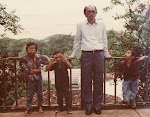
.jpg)
.jpg)
.jpg)
.jpg)
.jpg)
.jpg)
.jpg)

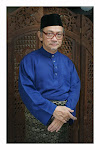

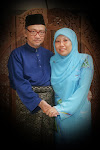




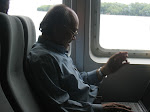


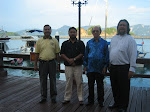













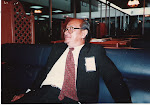
















No comments:
Post a Comment